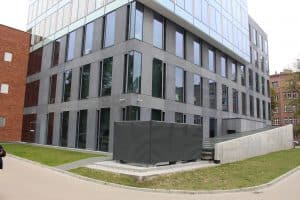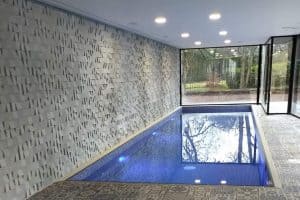In recent years, the issue of energy efficiency has become increasingly important in the world of architectural design. With a growing focus on reducing carbon emissions and conserving energy, architects and building designers are looking for ways to make buildings more energy efficient. One building material that is making a significant contribution to this goal is concrete cladding.
What is Concrete Cladding?
Concrete cladding is a type of cladding material made by combining concrete with other materials such as glass fibers, stone, or wood. Concrete cladding is used to provide a protective layer on the exterior of buildings and can also be used to add aesthetic appeal to the building’s design.
Why is Energy Efficiency Important in Building Design?
Energy efficiency is important in building design for several reasons. Firstly, energy-efficient buildings consume less energy, reducing the building’s carbon footprint and contributing to the conservation of energy resources. Secondly, energy-efficient buildings can result in lower energy bills for the building’s occupants, which can be significant cost savings. Finally, energy-efficient buildings can improve the overall quality of life for the building’s occupants, providing a comfortable and healthy living environment.
How Does Concrete Cladding Contribute to Energy Efficiency in Building Design?
Concrete cladding can contribute to energy efficiency in building design in several ways. Firstly, concrete cladding provides insulation, which helps to reduce heat loss from the building. This can result in a more stable indoor temperature, reducing the need for heating and cooling systems.
In addition to insulation, concrete cladding can also improve the ventilative energy efficiency of a building. The use of multiple airtight layers within an insulated concrete panel can improve the building’s energy efficiency. The internal skin of the concrete panels provides good insulation, maintaining stable temperatures within the building.
Another factor that contributes to the energy efficiency of concrete cladding is its thermal conductivity. A test conducted by the Warsaw University of Technology found that AGS System’s ventilated facade solutions, made of GD 350 steel with Magnelis ZM430 zinc coating, had low heat conductivity coefficients. The results of the test concluded that the AGS System successfully obtained brackets with low heat conductivity coefficients through the openwork profile structure that extends the heat path.
The Benefits of Concrete Cladding
In addition to contributing to energy efficiency, concrete cladding has a number of other benefits. Concrete cladding is a cost-effective option for both commercial and residential buildings. It is also easy to install and has a wide range of unique aesthetic options in terms of colors and textures.
Concrete cladding is also a long-lasting and eco-friendly building material. Concrete cladding is produced off-site, reducing the amount of waste produced during construction. It is also a durable material that requires low maintenance, making it a practical and cost-effective choice for building design.
Conclusion
In conclusion, energy efficiency is an important consideration in building design. Concrete cladding can make a significant contribution to energy efficiency by providing insulation, improving ventilative energy efficiency, and having low thermal conductivity. In addition to contributing to energy efficiency, concrete cladding has a number of other benefits, including being cost-effective, easy to install, and eco-friendly.
If you’re looking for a building material that will contribute to energy efficiency in building design, consider concrete cladding. With its many benefits and practical applications, concrete cladding is a smart choice for architects, builders, and building owners.





